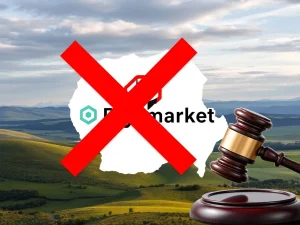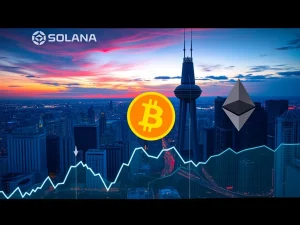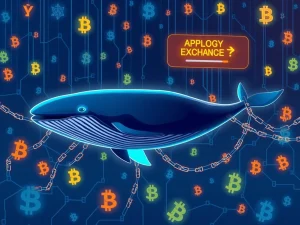Urgent Warning: Mantra Blames Risky Crypto Exchange Policies for OM Token Crash

The world of decentralized finance (DeFi) faced turbulence following the recent price collapse of the Mantra OM token. This incident has sparked a critical discussion, with Mantra itself pointing fingers at potentially risky practices within the broader crypto industry, specifically focusing on crypto exchange leverage policies. For anyone navigating the volatile crypto markets, understanding these dynamics is crucial.
Mantra’s Perspective on the OM Token Crash
Following the sudden decline in the value of its native token, Mantra released an update on April 30th addressing the situation. The platform’s CEO, John Mullin, stated that the crash was ‘bigger than Mantra,’ suggesting systemic issues at play rather than solely internal problems. Mullin highlighted that ‘liquidation cascades could happen to any project in the crypto industry,’ framing the event as a symptom of a wider problem.
The core of Mantra’s argument centers on the role of ‘aggressive leverage positions’ offered by exchanges. High leverage allows traders to control large positions with relatively small amounts of capital. While potentially amplifying gains, it also drastically increases the risk of rapid liquidations when prices move unfavorably. Mantra contends that these policies create significant investor risk and can trigger cascade effects that exacerbate price drops.
Addressing Investor Risk and Calling for Industry Action
A significant portion of Mantra’s post was dedicated to a call for industry cooperation. Mantra is actively engaging with major exchanges to discuss ways to improve market stability. They are urging other platforms and participants to provide input on how exchange policies might be adjusted to minimize risks for investors, rather than potentially permitting policies that create instability.
This focus on industry-wide change suggests that Mantra believes the issue of liquidation cascades fueled by high leverage is a threat to the entire decentralized finance ecosystem, not just individual tokens.
Mantra’s Steps Following the Incident
Beyond calling for external changes, Mantra also outlined several internal improvements being implemented:
-
Governance Enhancements: Mantra is accelerating efforts to increase the decentralization of its chain. This includes reducing its own internal validators and onboarding more external partner validators.
The goal is to have reduced internal validators by half and onboarded a total of 50 external partners by the end of Q2 2025, enhancing the network’s resilience and distribution of control.
-
Token Supply Management: To potentially mitigate future volatility and reduce supply, Mantra has burned 150 million staked OM tokens, permanently removing them from circulation.
-
Increased Transparency: A new real-time dashboard has been introduced to provide users with clear tokenomics data, aiming to improve transparency regarding the token’s supply and distribution.
-
Technical Resilience: Alpha testing has begun for Omstead, a new Ethereum Virtual Machine (EVM)-compatible testnet. This initiative aims to bolster the technical infrastructure and resilience of the Mantra chain.
Despite the price drop, Mantra noted that its chain continued to operate without interruption, even experiencing high transaction volumes during the period of volatility. This suggests the underlying network infrastructure remained robust.
The Role of Crypto Exchange Leverage Policies
Mantra’s emphasis on crypto exchange leverage policies highlights a critical debate within the crypto space. While leverage is a common tool in traditional finance and can offer benefits, its accessibility and high ratios on some crypto platforms have been linked to increased market volatility and amplified losses during downturns. The call for exchanges to reassess these policies underscores the potential systemic risk they pose, especially when combined with the interconnected nature of DeFi and centralized trading platforms.
Conclusion: A Call for Caution and Cooperation
The Mantra OM token crash serves as a stark reminder of the inherent risks in the cryptocurrency market, particularly those potentially amplified by aggressive crypto exchange leverage policies. Mantra’s response, which includes both internal improvements and a public call for industry-wide reevaluation of risk-inducing practices, signals a growing awareness of the need for greater stability and investor protection. As the decentralized finance sector matures, the balance between innovation and responsible risk management, involving both projects and trading platforms, will be crucial for sustainable growth and reducing the impact of liquidation cascades.









